Back to Trip Reports
Title: Finland 2008
Trip Type: Dedicated photography trip booked through Wild Arena.
Outline Itinerary: Martinselkosen Eräkeskus, 3 nights (2 nights of photography)
When: June
Equipment: Nikon D200/MD-200, D300/MD-10, Nikkors 70-200/2.8, 200-400/4, 18-70/3.5-45, TC-14E, Manfrotto 268, Gitzo GT3540XLS
Photographic Highs and Lows:
If you want to photograph wild brown bears in natural surroundings it is hard to imagine a better (or easier) place to do it.
|
A reminder that life in the forest can be hard |
There are a number of hides scattered about the forest and surrounding area which is only a kilometer or two from the Russian border. For this trip we were booked into the large communal forest hide, which holds about 12 guests, for both nights. However, on arrival we were informed that two of the “pro” hides were not being used and we could have use of them for the two nights of our stay, and at no extra cost (no doubt a reflection of the fact that Wild Arena visit every year with a group and so are likely to get first and complementary refusal of such offerings). As there were 4 of us in the group we elected to have one night each in a pro hide (they hold up to two photographers but the basic facilities mean that you should ideally be ‘good friends’ if planning to share) and one night each in the communal hide. Beautiful moss covered pine forest |
|
|
One of the pro hides was overlooking a swamp and the other a small pond. The guidance we were given was that the communal hide would get far more sightings than the swamp hide, and that in turn would get more than the pond hide. However, the pond hide had the potential of shots of bears in the water, possibly playing. Whilst the others pondered which they would prefer I nailed my colours to the swamp hide on the first night. I am not sure why, I just liked the idea of having a swamp environment and, as the weather was not at all good, I figured that the light would probably be better out from under the tree canopy in the forest in a more open area. He who hesitates often loses out and I was taking no chances.
This is a second pro hide on the swamp viewed from the hide I was in. A stunning setting...... |
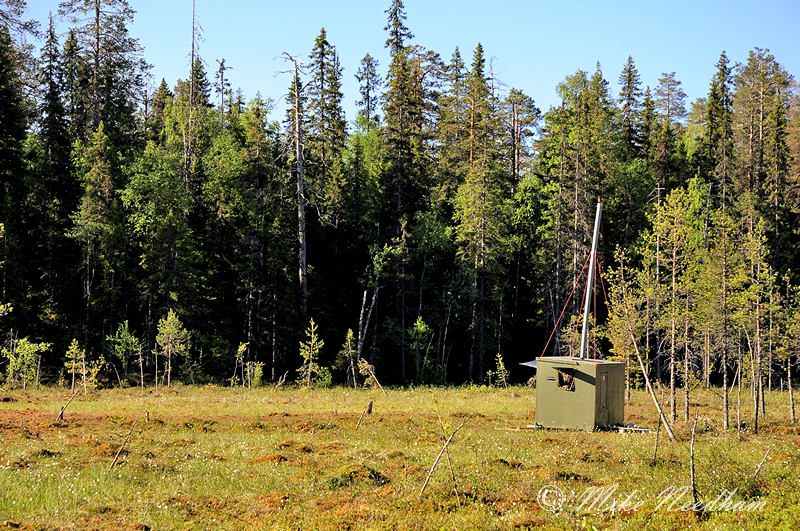 |
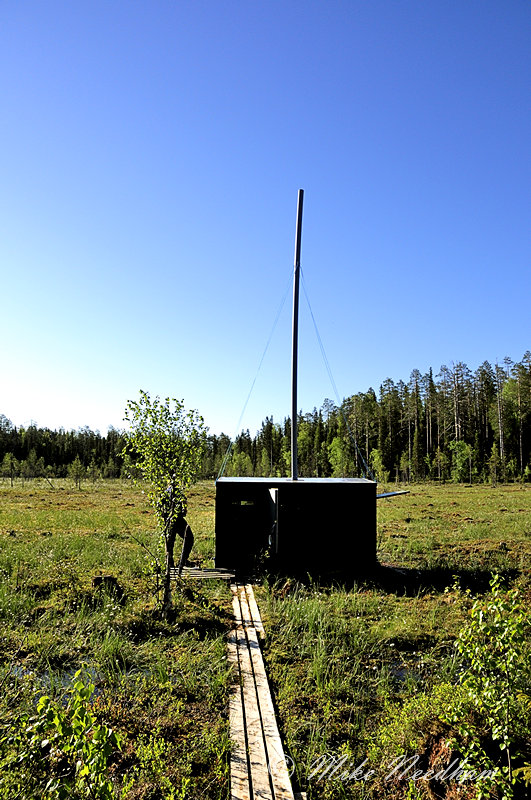 |
The pro hide was superbly designed, lots of openings on three sides, a single bed, a plastic chair and room for not a lot more. In front of each opening was a solid ledge with slots cut in it to allow a tripod head to be mounted and moved from side to side. The 3/8” screws were even provided with wooden spacers. All very well thought out. A tripod is not required in the hides and before I went I was advised by WA about the option of using a tripod head. However, I was told that a ball head would be best and that the design of the ledge would not facilitate the use of a Wimberly head (something I had just acquired and not yet used in anger). This was spot-on for the communal hide where we were meant to go for both nights, but in the swamp pro hide (I did not see the others) a Wimberly would have worked perfectly. That said the large B&S head that I took worked very well in both hides and I did not particularly miss the Wimberley. I found having two cameras set up and ready, one with the 70-200mm, the 200-400mm on the other, worked well and covered 100% of my shooting needs. Most of my shots were taken at focal lengths of around 100-300mm. 'my' swamp pro hide, you get an idea of scale from the guide stood behind the bush. The tall post is actually a pipe to dissipate your odor |
The view out of the side of the pro hide early the next morning |
Long focal lengths are really not essential, I took only a handful of shots at >400mm (200-400mm plus TC-14E). These three were taken with the 70-200mm....................
|
@ 120mm (ISO 1600) |
@70mm |
@ 200mm (plus very slight cropping) |
The bears are baited to the hide with small dark brown dog biscuits (at least that what they looked like) but, because of the swamp, these were totally invisible, the bears sniff them out from below the shallow (4-6”) water.
|
ISO 1600 |
The weather on the first night at the swamp was changeable and generally poor (drizzle and mist) but as it was midsummer (21 June) I was still able to shoot until about 23:00, especially during the clearer periods, maxing out at ISO 1600 on the D300. It was light enough to shoot again from about 01:30 to 02:00 the next morning but the bear activity was almost zero after midnight. Shooting at ISO 1600 on the D300 was pushing the technology rather further than I would have liked, but essential at times. The results were technically far from idea but atmospheric, and sometimes worked well as general scenes. The D200 I never shot above ISO 400 and so I tended to use the shorter and faster 70-200mm on this camera whilst the 200-400mm was used with the D300.
|
ISO 1600 |
%20Martinselkosen%20Er%C3%A4keskus_Finland%20June%202008%200054.jpg) |
I went into the hide at about 17:30 (out again at 07:30) and the first bear appeared about an hour later. Over the next 4-5 hours there was a steady precession of visitors, usually 1-3 at a time, and rarely did 15-30 minutes pass in this period with no bears. I had big bears, little bears, dominant and subordinate bears, mothers with playful cubs, juveniles, etc. At times the bears would approach to within a few feet of the hide but they never gave any indication that they knew (or cared) that I was there, the smaller cubs often playing whist the mother fed. An incredible experience, with or without a camera. Boisterous juvenile A more 'mature' individual |
%20Martinselkosen%20Eraekeskus_Finland%20June%202008%200348.jpg) |
Despite my initial disappointment at the weather I much prefer the images that I shot when it was misty and raining to the few I captured during rare periods of sunshine. If I go back and will definitely use the swamp hide again, and I will hope for light rain from a bright overcast sky. Highly recommended but 14 hours on your own locked in a small hide is not for everyone, I loved it!
|
The second night I was in the larger communal hide located in the conifer forest, again a 14 hour overnight stint. The weather was significantly ‘better’ than the previous night which proved a little troublesome at times. Here the bait was a mix of the same dark brown biscuits used in the swamp and off-cuts from a salmon processing factory. The salmon was not ideal for photography but boy did it attract the bears!
The larger communal hide |
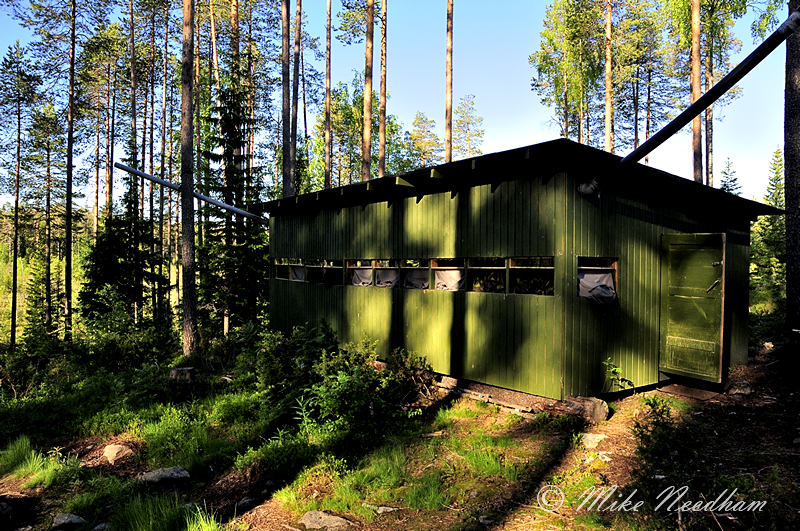 |
The original guidance that the forest hide would see most activity was strongly supported by my experience, however the trails used by the bears were well worn and this, combined with the often conspicuous pieces of salmon made getting a good (wild looking) image very challenging at times. Doing some subsequent reading up about the facilities at Martinselkosen (prompted by the fact that a couple of people who walked with us to the forest hide did not enter it but were swapping bear stories the next morning), I now believe there is also a forest pro hide, just a few 10s of meters from the communal hide, which gives more natural views. Indeed I understand that it is moved at the start of each season to avoid the over worn look to the tracks etc.) but this would need to be confirmed before a visit. If correct, it would be an excellent option.
%20Martinselkosen%20Eraekeskus_Finland%20June%202008%200628.jpg) |
The communal hide is a great venue and offers some excellent opportunities for natural looking shots of wild brown bears in the natural habitat. I also saw a couple of golden eagles up in the trees looking for scraps of fish; they do apparently come to the ground but not on this particular evening. That said I was a little disappointed with this hide. The salmon and well worn trails I have already mentioned, but it is also the fact that I did not feel as close to nature in such a (relatively) large structure with other people around you. Here an older bear walks one of the worn trails Despite what I have said do not doscount the communal hide, here a nice familty shot |
%20Martinselkosen%20Eraekeskus_Finland%20June%202008%200686.jpg) |
If I hadn’t had the time in the pro hide first I would have been blown away by the main hide, it is fabulous. But the fact is I did have time on the swamp and it spoilt me, resetting my expectations both photographically and from an overall experience perspective. If (probably when) I go back I will be digging a little deeper into my pockets or spending a little less time shooting, but I will definitely be using the pro hides. The experience (if you are ok on your own for 14 hours in such a situation) was amazing and I would estimate that around 90% of the images I that I kept were shot on the first night.
_Martinselkosen%20Eraekeskus_Finland%20June%202008%20017.jpg) |
The daytime is at leisure as the bears sleep. In the grounds next to the accommodation block there are a couple of saunas (as you would expect in Finland) and a bird feeding station. Here there is good opportunity to shoot woodpecker, tits, finches, red squirrels, etc. But do try to get some sleep for the next night with the bears, it is an experience not to be missed.
Red squirrel shot from the sitting area next to the bird feeders Woodpeckers are frequent visitors around the feeders |
_Martinselkosen%20Eraekeskus_Finland%20June%202008%20016.jpg) |
|
Wagtail shot from the communal hide duering a rare quiet spell in bear activity |
Other Comments:
The staff at Martinselkosen can arrange to pick you up from the local airport which I believe is about a 1 hour drive away. There were no suitable flights on the dates I travelled and so I flew to Oulu, about 2 hours away, but again you can arrange transfers. Accommodation (to sleep in the day and store any general possessions) and meals can also be booked at reasonable prices and the food was good. For my trip all of this was arranged by Wild Arena who put together an excellent trip.
The one down side was the mosquitoes, the bear hides were fine but walking through the forest in the day you definitely need a mozzy net. Even just hanging around the accommodation they are a problem and you should expect to be bitten, I was, heavily. You have been warned but this is a very small price to pay for the experience which was truly amazing.
For more brown bears also see Slovakia
Back to Trip Reports or General Ramblings

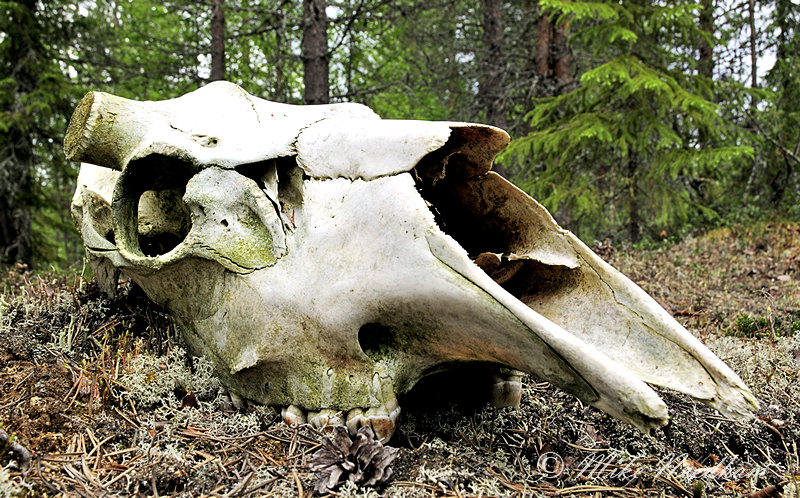
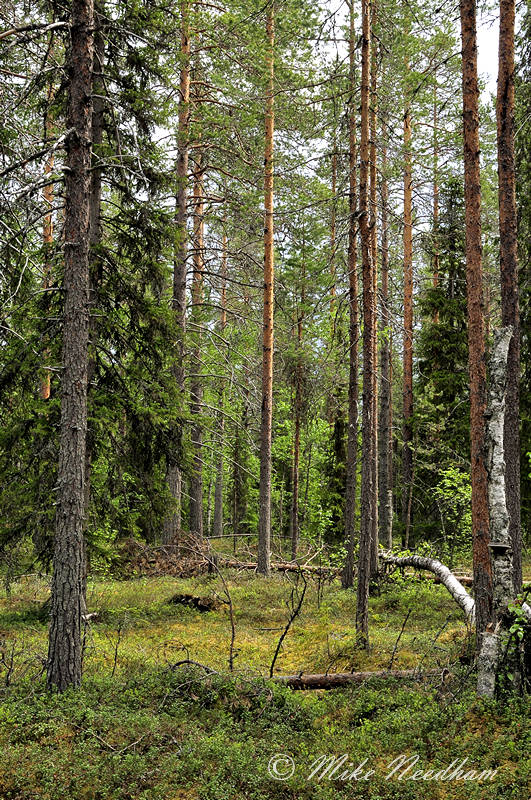
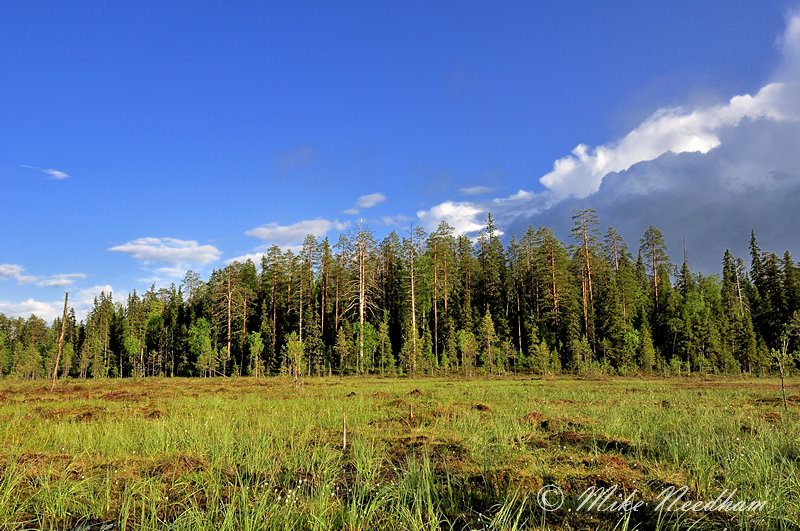
%20Martinselkosen%20Eraekeskus_Finland%20June%202008%200448.jpg)
%20Martinselkosen%20Er%C3%A4keskus_Finland%20June%202008%200619.jpg)
%20Martinselkosen%20Eraekeskus_Finland%20June%202008%200616.jpg)
%20Martinselkosen%20Eraekeskus_Finland%20June%202008%200503.jpg)
%20Martinselkosen%20Eraekeskus_Finland%20June%202008%200470.jpg)
_Martinselkosen%20Eraekeskus_Finland%20June%202008%20007.jpg)